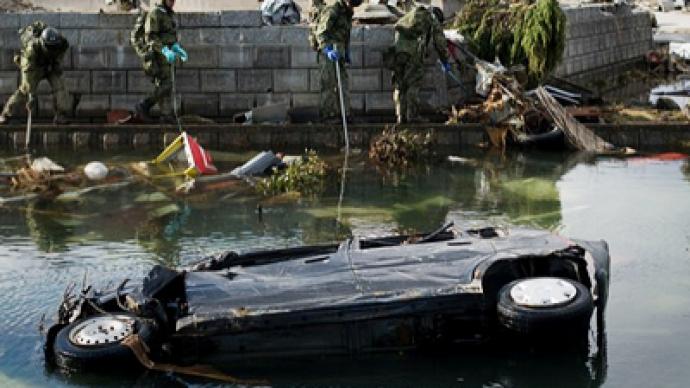Attention given to tragedies only with dramatic footage

In-depth media coverage of Japan's calamity is being watched by millions around the world. However, when the cameras are not there to catch dramatic footage, it can be a very different story.
Hi-tech images from the country were able to transport global audiences to the heart of the disaster zone as the catastrophic events unfolded. Leading news outlets deployed their best journalists to cover the disaster in Japan. And the hearts of billions of viewers worldwide have gone out to those Japanese who fell victim to the deadly tsunami.What makes great television is images that make the viewers sympathize and feel the tragedy of the people caught up in a natural disaster. But when there is a lack of those images, streaming live from all screens, the sorrow of millions can go almost unnoticed. The earthquake in Pakistan killed more than 75,000 people in 2005.However, leading Western networks did not rush to send extended crews over there. They based their reporting on scarce footage – often just a map. Humanitarian catastrophe followed amid complaints that the international community could not care less.While the world’s media did notice the tragedy, the coverage was nothing as intense as can be seen now in Japan. Some in the business say Japan being a high-tech country means coverage is assured – whereas less developed nations like Pakistan get much less media attention.“The world probably got less of the story in some of those other countries because they didn’t have the technology, the cameras, like in Japan,” said Bob Parks from the Media Research Center. “From dozens of different angles you saw the waves coming in, which is the kind of footage, unfortunately in our business, that’s the dream… and you don’t get in some other Third World countries, when you just get shots of the aftermath.”The shots of the aftermath of a cyclone that hit Myanmar three years ago are horrifying. More than 138,000 were killed as a result. The government of Myanmar limited access to foreign journalists and there was no streaming live video from the disaster zone, and – as it happens in news business – very quickly the story died down. “If there’s a disaster in the middle of Africa, in sub-Saharan Africa, obviously you won’t have the same images that you have from Japan, where TV is a 24/7 operation,” noted Pepe Escobar, an Asia Times correspondent. “That's why this tsunami in Japan is so huge in terms of worldwide coverage, because there are cameras everywhere. If this was in China, western China for instance, you have one-tenth of the coverage, because the images are not there,” he added.The 2009 earthquake in China’s Sichuan province killed around 68,000 people. And again the coverage was limited, and as a result the world interest’s in the disaster was limited as well. Human tragedy – whether in Japan, in China or Chile – deserves world sympathy. But more often than not, the attention span of world news channels depends on which tragedy makes better television.












